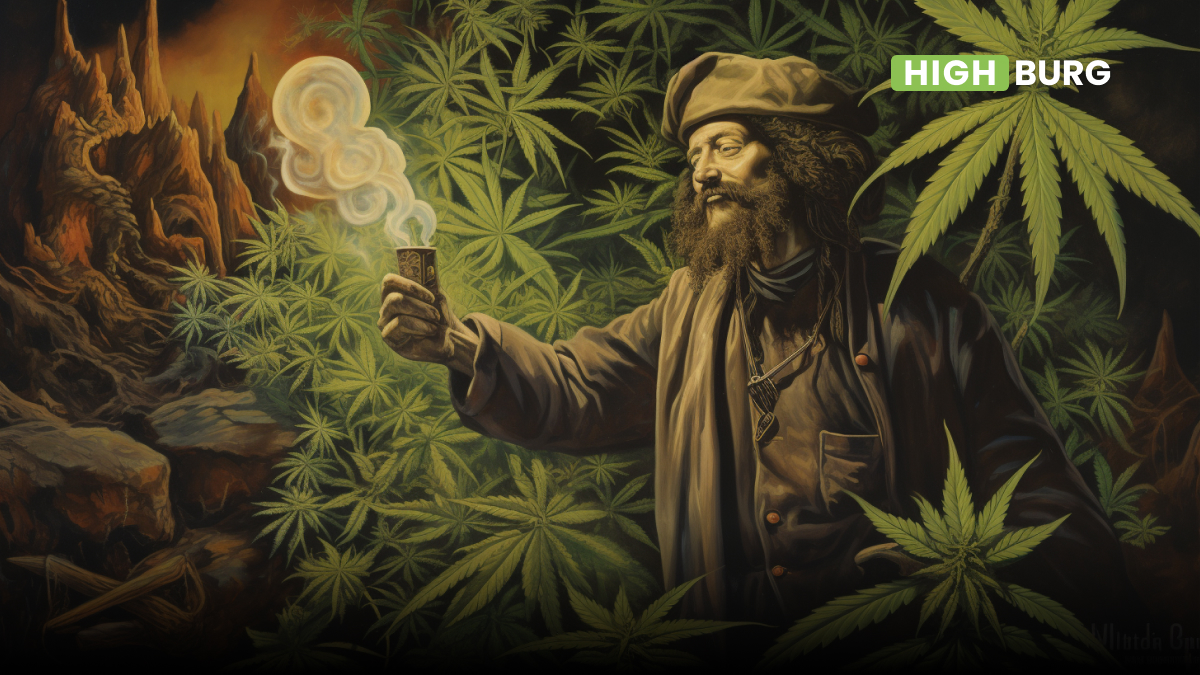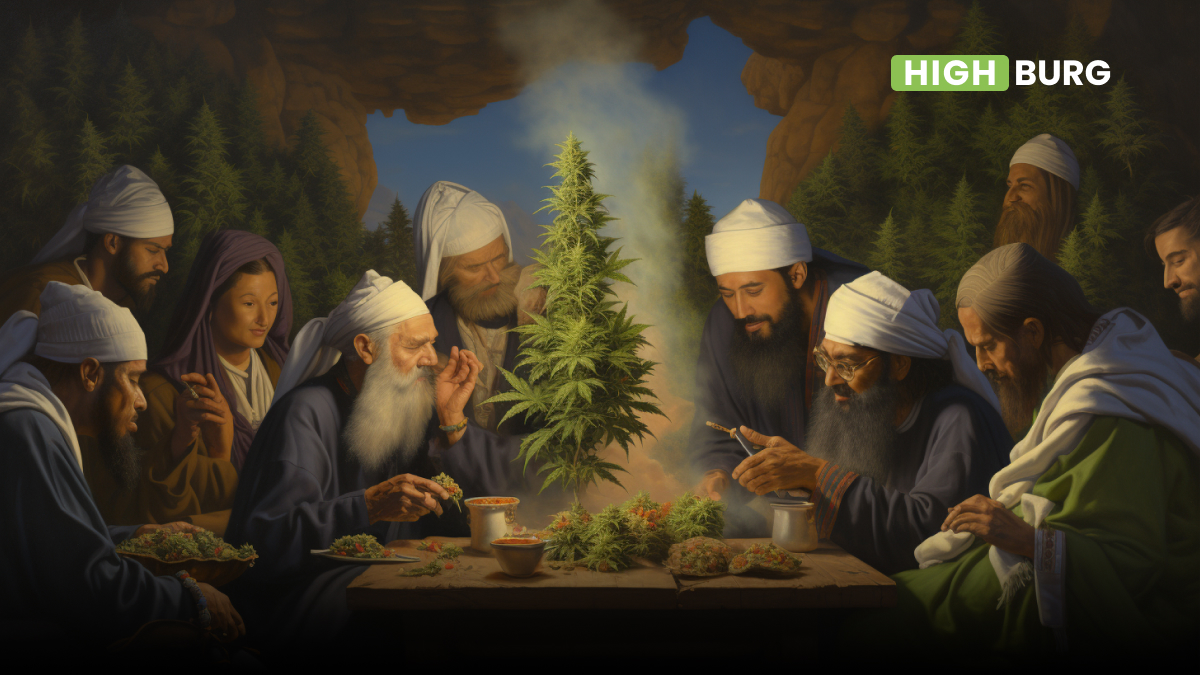Cannabis sativa L. (hereinafter Cannabis) is one of the most adaptable plants known to man , which has deep historical roots in several cultures all over the world. Cannabis has been influential in many aspects of human life due to its extraordinary phenotypic flexibility, potentially therapeutic effects and psychotropic capability. Despite being used for thousands of years, there is still uncertainty about the precise origin of the genus.
Recent studies state its origin in Central Asia, approximately 28 million years ago in the northern region of the Tibetan plateau. However, theories of derivation from South Asia have also been proposed. The older artifacts are seeds that were found in Japan about 10,000 years ago, but the precise location of the domestication of cannabis is still a mystery. Although theories of multiregional domestication have also been suggested, the beginning of domestication was probably somewhere in Central Asia.
Below is a small summary of the history of cannabis as we know it, taken from the book “the budtender’s guide” by Oaksterdam University. [1]
Cannabis timeline
- 28 million BCE: Research suggests that the cannabis plant evolved in the northeastern Tibetan Plateau, close to Qinghai Lake
- 32.000 BCE:Cannabis pollen is identified in modern India
- 10.000 BCE:Artifacts point to cannabis cultivation in Japan
- 5000-2500 BCE: Research points to cannabis cultivation for fiber and spiritual use in northwest China.
- 2700 BCE: Chinese Emperor Shennong is thought to be the original author of the Pen Ts’ao Ching. This early pharmacopeia includes cannabis as a treatment for many illnesses, including gout, rheumatism, and malaria, and is the first known documentation of the plant’s therapeutic application.
- 2000-1400 BCE:Cannabis use and cultivation spreads from Asia to the Middle East
- 1500-1000 BCE:Cannabis “bhang” becomes popularized in ancient India and remains a popular drink in modern India
- 600 BCE:Taoism gains popularity in China, and cannabis and other mind-altering substances fall out of favor
- 2000 BCE-800 CE: Cannabis spreads to Europe and North Africa
- 1484 CE: Pope Innocent VIII issues a papal ban on cannabis and declares it “an unholy sacrament of the satanic mass”
- 1500 CE:Cannabis proliferates throughout Africa where smoking (as opposed to oral ingestion) becomes popular
- 1400-1600 CE:Hemp fibers are used in ship sails and riggings during European colonialism of Africa and the Americas. Cultivation spreads to the Americas.
- 1563 CE:Queen Elisabeth I requires English subjects in British colonies to grow hemp if they own more than 60 acres of land.
- 1790-1906 CE: Cannabis is a common ingredient in unregulated patent medicines.
- 1906 CE:The Pure Food & Drug Act passes in the United States, regulating medicines for the first time.
- 1937 CE: The Marijuana Tax Act passes in the United States, essentially prohibiting cannabis, despite opposition from the American Medical Association.
- 1970-1972 CE: The Controlled Substances Act (US) and similar measures are passed worldwide in accordance with the UN Single Convention on Narcotic Drugs. Cannabis is classified in all participating countries as Schedule I, meaning it has no accepted medical use and a high potential for abuse.
- 1991 CE: San Francisco voters pass Proposition P, making the city the first region to re-legalize cannabis for medical use
- 1996 CE: California voters pass Proposition 215, making it the first state to re-legalize cannabis for medical use
- 2001 CE:Canada becomes the first nation to re-legalize medical cannabis
- 2012 CE:Washington and Colorado become the first regions to re-legalize cannabis for adult use
- 2018 CE:South Africa and Canada legalize adult use cannabis, inspiring even more countries to review and reshape their approach to cannabis.
There is a long tradition of cannabis use in numerous cultures all over the world. Cannabis was used as a food source, a medicine, and a key component in many shamanic rituals. It was also used to make fibers, ropes, textiles, and paper.
Despite having a long history of use, cannabis is presently most well-known for its psychotropic recreational use: today cannabis is the most popular recreational drug in the world, with 183 million users in 2014.
Although it is unclear when and how people first discovered that cannabis possesses psychoactive properties, it is likely that they have been using it in various ritualistic and religious contexts since the early Paleolithic era. One of the first convincing indications of its use in ceremonial smoking dates back 2500 years and is found in the Pamir Mountains. The findings of charred seeds, wooden braziers and stones in the Pamirs revealed that cannabis plants had been burned on purpose. All of these discoveries show that cannabis once played a significant part in religious ceremonies.
Since humans have been using cannabis for a wide range of purposes for thousands of years, we can also discover several common or vernacular names for it. Depending on the usage and plant component used, it is frequently given different names. For instance, there are over 40 names for cannabis in Sanskrit. The references from India have the widest variety of names. Bhang, a common name for cannabis in India, was the overall most used vernacular name. As previously mentioned, the common names for cannabis can vary depending on the plant’s use as well as the various nations or regions within them. In India, for example, the three most common preparations are:
- bhang – dried matured leaves and flowering shoots of female and male plants
- ganja – dried flowering tops of the cultivated female cannabis plants
- charas – the resinous matter collected from the leaves and flowering tops.
The renewed interest of the pharmaceutical industry
Cannabis’ use began to decline as a result of being classified as an illicit substance. Nevertheless, during the past 20 years, research on cannabis has grown, and many of its traditional uses have begun to attract more attention.
The pharmacological industry’s growing interest in cannabis has made it a valuable plant in medical research. Hundreds substances, including terpenoids, flavonoids ,among others, as well as over 150 cannabinoids, all of which have important anti-inflammatory, antibacterial, and neuroprotective properties, have been found in Cannabis up to this point.
Numerous traditional medical applications of cannabis have already been established and are now accepted practices in medicine. It can be used to potentially treat inflammation, spasticity, and chronic pain related to multiple sclerosis, as well as to treat cancer discomfort.
In addition to its well-known usage for recreational and medical purposes, cannabis has been significant in many other aspects of human life. Possibly the earliest plant parts collected were cannabis seeds. In Asia, these seeds have played a vital role in human nutrition for a long time, being consumed in diverse forms like raw, roasted, pickled, ground, dried, and pressed for oil.
Cannabis is known for having one of the strongest and most resilient natural fibers, which is why it has been used for so long to make garments, coarse canvas, sackings, twine, rope, fishing nets, rugs, and pulp for paper. In the sustainable business, cannabis fibers are finding new applications like house insulation, hemp fiber interior panels for vehicles, animal bedding, nonwoven agricultural fleece, matting, and mulch for weed control and erosion management.
References:



